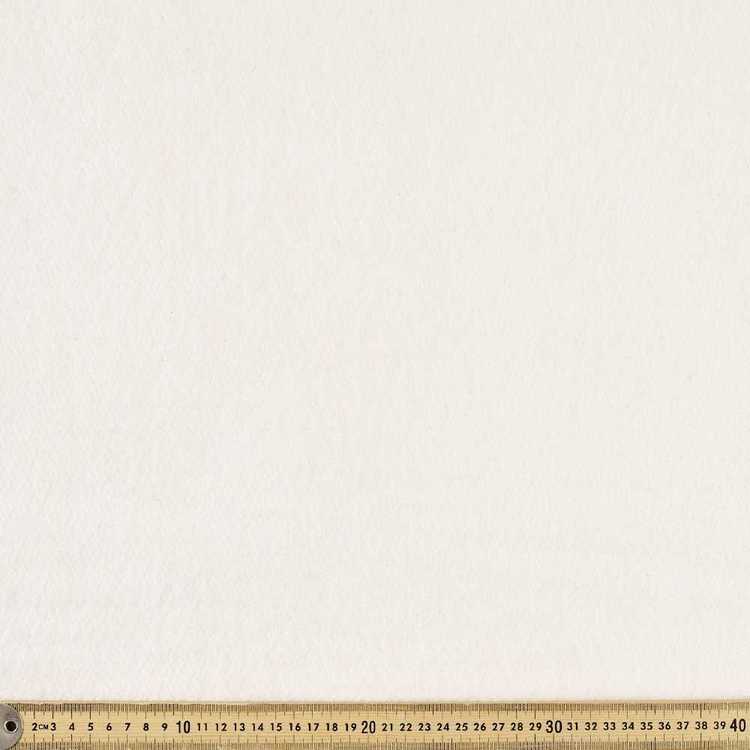 | ||
| Your browser is not supported. | ||
|
Please browse our site using any of the following options:
| ||
Bamboo & Bamboo Blend
If you are looking for something different from the average cotton fabric, then check out Spotlight's range of bamboo fabric. Shop online or in-store.
1 item found.
Everything You Ever Wanted To Know About Bamboo Fabric
Cotton may be the best-known fabric worldwide, but it does not mean there is not any room for a rival. And that rival is here already, because bamboo fabric is becoming increasingly more popular around the world. But what should you know about bamboo fabric as a crafter? And could it be beneficial for your projects? Find out everything you ever wanted to know about bamboo fabric below.
What Are The Benefits Of Bamboo Fabric?
Bamboo fabric is known for its superior softness, this has everything to do with the overall shape of a bamboo fibre. When you take a closer look at a bamboo fibre, you will notice that it is smooth and round. When this is turned into a fabric, it provides that unique softness only bamboo can provide.
Another major advantage of bamboo is that it requires much less chemical processing to make, which makes it a more environmentally friendly option compared to other fabrics out there. Because manufacturers do not need to use as many chemical processes, it is much more suitable for people with certain allergies or sensitive skin.
Bamboo is also a plant that grows incredibly fast. As a result, this material is sustainable and easy to source. This also has an influence on the cost of bamboo, which remains affordable for most crafters out there.
Another major benefit of bamboo fabric is that it absorbs humidity beautifully. In warmer climates, it means that the fabric can keep moisture away from your body. It also has an insulating property, making it a suitable material for clothes that are warn throughout the year.
Finally, bamboo is also classified as an antibacterial material. As a result, the fabric is often used for baby products such as hooded towels and face washers. In short, there is no limit to the applications of bamboo fabric.
How Can Manufacturers Make Fabric From Bamboo?
This is a common question, but the process is actually quite straightforward. Firstly, the manufacturer will harvest bamboo stalks, which are taken to the factory. Then, the stalk is cut into tiny pieces and is made into a special bamboo pulp. The resulted pulp is then dried into sheets, which turns it into so-called viscose. The viscose is then used to make the bamboo thread, which is later used to weave the bamboo fabric.
Is Bamboo An Organic Fabric?
Even though bamboo is more environmentally friendly than most fabrics out there, it is not completely organic. The reason for that is because manufacturers do have to use a caustic agent during the manufacturing process. And while it requires less chemicals than for example cotton, that does mean that bamboo is not necessarily an organic material by nature.
Of course, this does not mean that you cannot find any organic bamboo out there. There are manufacturers that solely focus on the production of organic fabrics such as organic bamboo and cotton. However, these fabrics do require more manipulation during the production process, and this can lead to an increase in price.
Bamboo can come in many different forms as well. When you want the softest type, you should look for 100% bamboo fabric, which means that only bamboo was used to create the fabric in question. However, there are also bamboo blends, which often use additional materials such as cotton, spandex, and lycra to provide a fabric with additional characteristics.
What Is The Best Way To Maintain Bamboo?
Manufacturers will always attach a label to bamboo fabric, which will give you details in terms of the temperature it should be washed on and how it can be dried. However, it is important to know that bamboo shrinks considerably less than cotton upon its first wash. On average, pure bamboo fabric only shrinks by maximum 3%.
Once you have made a garment or another sewing project from bamboo, it is usually recommended to wash them by hand as much as possible. The reason for that is to maintain the shape of the garment, as bamboo is not that resistant to tumbling around in the washing machine and the dryer. Ideally, you should handwash bamboo and put it on the clothes line.
Evidently, some manufacturers make their bamboo fabric in combination with other fabric fibres. When used in combination with cotton, bamboo fibre can be put on a gentle cycle in the washing machine. You can also put it in the dryer on a low heat.






